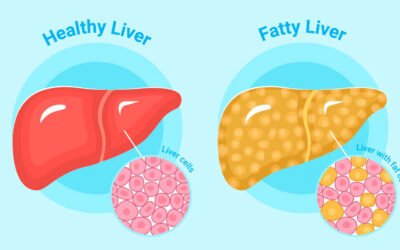HYPERTHYROIDISM
- Hyperthyroidism is an overactive thyroid gland; it is a condition where your thyroid gland makes and releases high levels of thyroid hormones than your body needs which can affect your entire body
THYROID GLAND AND ITS FUNCTION
- Thyroid gland is a small, butterfly-shaped gland in front of your neck.
- It produces hormones that can control the way the body uses energy.
- Thyroid gland hormones affect nearly every organ in your body and control many of the body’s most important functions. For example, they affect your heart rate, breathing, digestion, weight, and moods.
-
CAUSES/ RISK FACTORS
- Excessive intake of food which contains iodine. Iodine is found in some medicines, seafoods.
- Inflammation of the thyroid gland – due to the viral infections, after pregnancy, or some medicines.
- Family history of the thyroid gland disease.
- Certain chronic illnesses, such as the type 1 diabetes, primary adrenal insufficiency and pernicious anaemia.
SYMPTOMS
- Swelling at the base of neck.
- Palpitations/rapid heartbeat–that can exceed 140 beats per minute.
- Irregular in the menstrual patterns, Increased sensitivity to heat and
- Changes in bowel patterns, especially more frequent bowel movements (Diarrhoea).
- Weight loss
- Warm, thin, moist skin
- Sleeping difficulty
- Feeling agitated, anxious, irritable, delirium, confusion, fatigue.
- Muscle weakness
- Brittle hair and excessive hair loss.
COMPLICATIONS
If not treated, it can cause serious problems with your heart, muscles, bones, menstrual cycle, and fertility.
- Eyes- Bulging or protruding eyes, Vision loss, Double vision, Light sensitivity, ulcers of the cornea.
- Stroke
- Brittle bones. -Too many thyroid hormones interfere with your body’s ability to incorporate calcium into the bones.
- Heart problems – such as fast heart rate, and heart failure, abnormal heart rhythm.
- Infertility
DIAGNOSIS
- Clinical examination – to check if your thyroid is larger than normal.
- Blood tests – Thyroid Profile – to look for high levels of thyroid hormones in your body.
- Thyroid ultrasound – to evaluate the thyroid for evidence of any nodules.
-
GENERAL MANAGEMENT
- Foods to eat:
- Low iodine foods – such as non-iodised salt, egg whites, unsalted nuts or nut butters, homemade breads made without salt, oats, potatoes, maple syrup, honey, popcorn with non-iodised salt. Foods with low iodine content helps to reduce thyroid hormones.
- Cruciferous vegetables – such as broccoli, sprouts, cauliflower, mustard. These may stop your thyroid gland from using iodine properly, which may help to reduce thyroid hormones.
- Foods rich in Iron – Dried beans, lentils, green leafy vegetables, nuts, red meat, whole grains, poultry such as chicken and turkey.
- Foods rich in Selenium – Chia seeds, sunflower seeds, mushrooms, oat bran, Brazil nuts.
- Foods rich in Zinc – Chick peas, cocoa powder, cashews, mushrooms, pumpkin seeds, beef.
- Foods rich in Calcium – Spinach, almond milk, collard greens, white beans.
- Foods to avoid :
- Foods rich in Iodine – Seafood (such as fish, prawns, crabs, and lobster), cheese, egg yolks, iodized salt, iodized water, some food colorings.
- Foods rich in Gluten – Wheat, barley, brewer’s yeast, rye. Gluten may harm the thyroid gland by causing inflammation.
- Soy – Soy milk, soy sauce, tofu.
- Caffeine – foods and beverages that contain caffeine such as, chocolate, soda, tea, coffee. Try to replace caffeinated beverages with natural herbal teas, hot apple cider or naturally flavored water.
- Physical activity – Following yoga asana are beneficial for thyroid health,
- Camel pose (Ustrasana)
- Bridge pose (Setubandhasana)
- Child pose(Shishu asana)
- Corpse pose(Shavasana)
- Surya Namaskars
HOMEOPATHIC MANAGEMENT
Homeopathic medicine not only treats hyperthyroidism, also treats its underlying cause. There are several remedies available to treat hyperthyroidism, which can be selected on the basis of cause, sensations and modalities of the complaints. For individualized treatment, the patient should consult a qualified Homeopathic Doctor in person.
For consultation and appointments write into contact@beingwellhomoeopathy.com


0 Comments